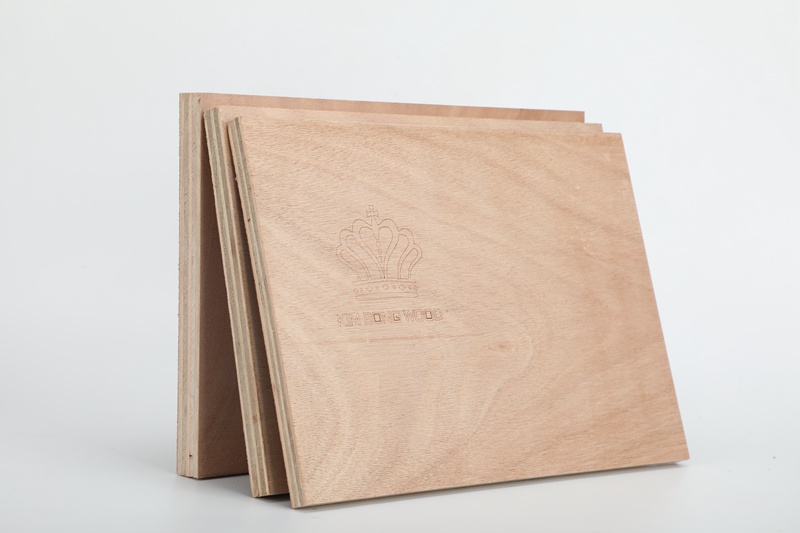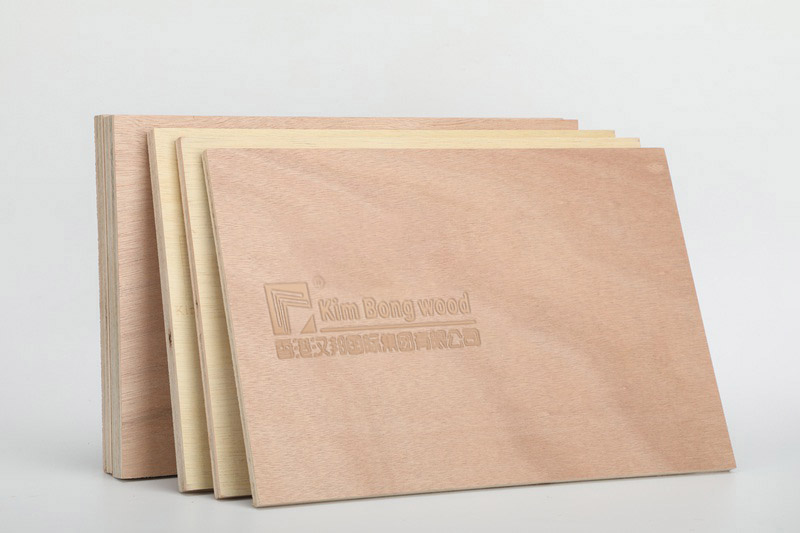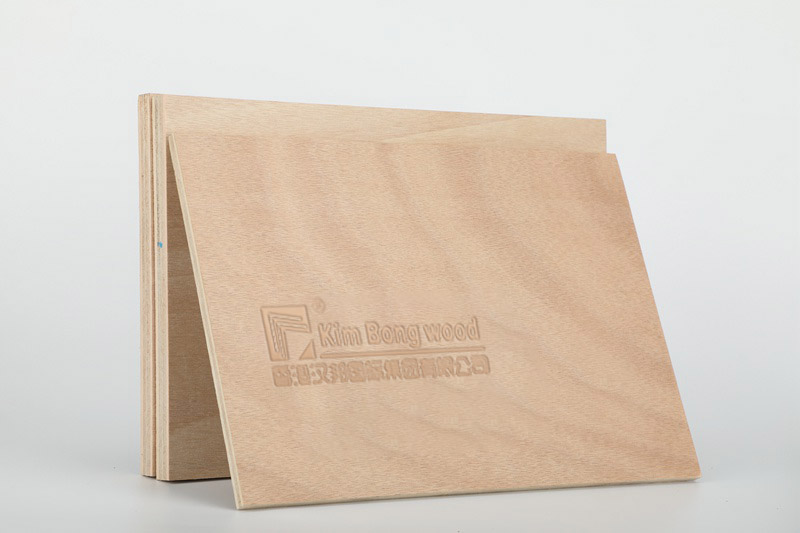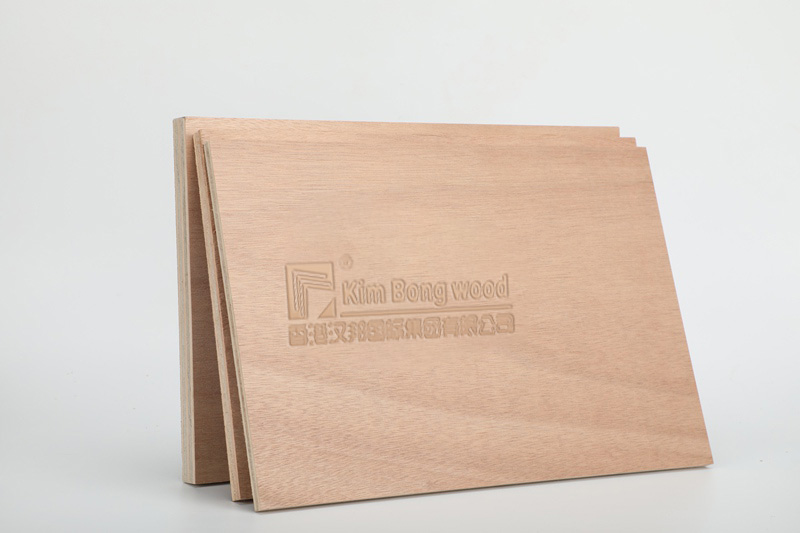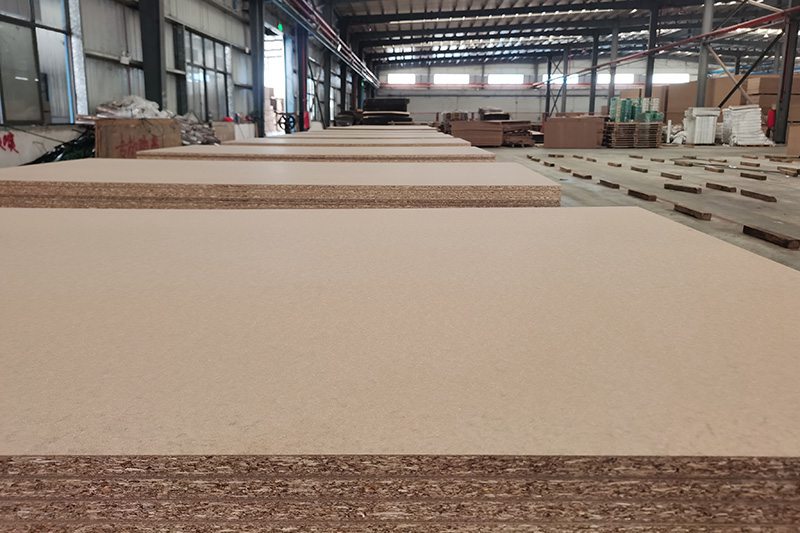High Quality Moisture Resistant Particle Board
Please click the button below to contact us.
Introduction:Moisture Resistant Particle Board is a high-performance particle board designed for wet environments. This board has a uniform granular texture, a smooth surface and a natural color. During its production process, special moisture-proofing agents and water-repellent agents are added to give it excellent moisture-proof properties.
Product Description
Moisture Resistant Particle Board is a high-performance particle board designed for wet environments. This board has a uniform granular texture, a smooth surface and a natural color. During its production process, special moisture-proofing agents and water-repellent agents are added to give it excellent moisture-proof properties. Whether it is used for decoration in wet areas such as kitchens and bathrooms, or for making furniture that is often exposed to water, Moisture Resistant particle board can provide reliable performance and long-lasting durability, creating a healthy and comfortable indoor environment for users.
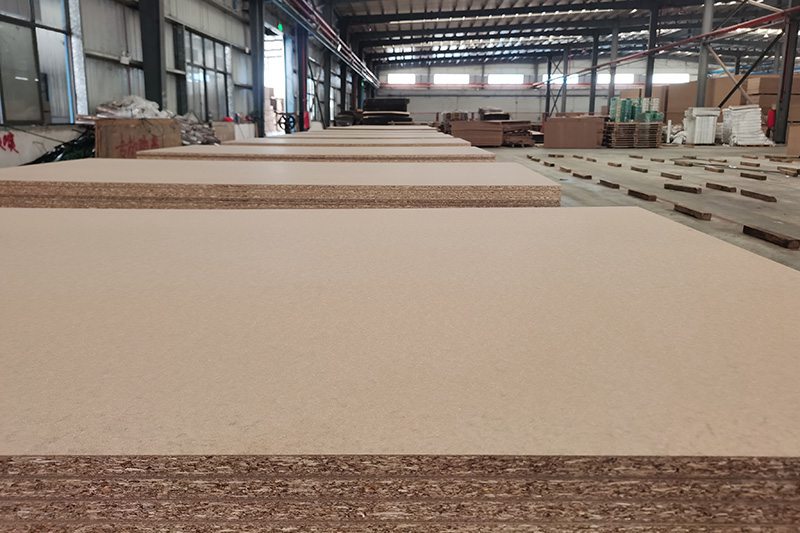
Moisture Resistant Particle Board Parameters:
| Item | Parameter |
| Place of Origin | China |
| MOQ | 1000 pc |
| General Specifications | 8mm, 18mm |
| Logo | Accept Customized Logo |
| OEM/ODM | Availalbe |
| Packaging | Regenerated Wooden Base |
| Transportation | By Sea/By land |
| Quality/Safety Certification | GB/T19001-2016/ISO9001:2015, Hi-tech Enterprise, Attestation of Chinese Environment Mark |
Production technology of Moisture Resistant Particle Board
1. Raw material preparation
Main raw materials: wood chips, sawdust or recycled wood materials such as pine and eucalyptus
Core process requirements: Wood needs to be dried to ensure that the moisture content is less than 10%
2. Adhesive selection
Traditional urea-formaldehyde resin (UF) improved formula, adding waterproof additives
High-end products use isocyanate (PMDI) adhesive, which has stronger waterproof properties
3. Production process flow
(1) Raw material crushing and screening → (2) Drying → (3) Gluing and mixing (adding waterproof agent)
(4) Paving and molding (three-layer structure) → (5) Pre-pressing → (6) Hot pressing curing (temperature 180-220℃, pressure 20-30kg/cm²)
(7) Cooling and curing → (8) Sanding and thickness determination → (9) Melamine veneer treatment
4. Special treatment process
Edge sealing treatment: waterproof coating or PVC edge sealing is used on the board edge
Wax addition: paraffin emulsion is added during the production process to improve moisture resistance
Characteristics of Moisture Resistant Particle Board
Low water absorption expansion rate
The water absorption expansion rate (24h) of Moisture Resistant Particle Board is strictly controlled at ≤12% (superior product) or ≤18% (standard type). This indicator has passed strict laboratory tests. In the experiment simulating a humid environment, after the board was soaked in water for 24 hours, its thickness expansion rate was only 10% - 12%, which is much lower than the 25% - 35% of ordinary particle board. This excellent moisture-proof performance ensures that the board will not expand, deform or be damaged due to water absorption during long-term use. It is particularly suitable for places with high humidity such as kitchens and bathrooms, effectively extending the service life of the board.
Green Core Moisture-proof Treatment
The board adopts Green Core technology, and moisture-proof agents and water-repellent agents are added during the production process. These additives can effectively prevent moisture from penetrating into the board and reduce the board's adsorption of moisture. Experimental data show that after one year of use in an environment with a humidity of 80% - 90%, the internal humidity of the Moisture Resistant Particle Board treated with green core is only 10% - 12%, while the internal humidity of untreated ordinary particle board can reach 20% - 30%. This special moisture-proof treatment not only improves the durability of the board, but also enhances its stability in a humid environment, ensuring that the board maintains good physical properties during long-term use.
Strict standard certification
Moisture Resistant Particle Board has passed the GB/T19001-2016/ISO9001:2015 quality management system certification, high-tech enterprise certification and China Environmental Labeling certification. These certifications show that from raw material procurement, production and processing to finished product inspection, every link strictly follows international and domestic environmental protection and quality standards. Its formaldehyde emission is only 0.07 mg/m³, which is much lower than the 0.12 mg/m³ specified in the national E1 grade standard, ensuring the environmental performance of the product. When using this board for decoration and furniture making, users do not need to worry about indoor air quality issues, creating a healthy and safe living environment for their families.
High density and strength
The density of this board is usually between 680 – 750 kg/m³. This moderate density makes the board have good strength and easy processing and installation. After testing, its static bending strength can reach 25 - 35 MPa, and its internal bonding strength (IB) reaches 0.6 - 0.8 MPa, which is better than the strength index of ordinary particleboard. These performance indicators show that Moisture Resistant Particle Board can withstand large loads and external forces, and is not prone to breakage or deformation, providing reliable material support for furniture making and decoration.
Accurate thickness deviation control
The thickness deviation of Moisture Resistant Particle Board is controlled within ±0.3mm. This high-precision thickness control is due to advanced production equipment and a strict quality control system. In practical applications, precise thickness deviation can ensure that the board achieves good results during processing such as veneer and edge banding, and avoid processing defects caused by uneven thickness. For example, when making high-quality furniture, precise thickness control can improve the adhesion and uniformity of veneer materials, make the furniture surface flatter and smoother, and improve the appearance quality and performance of the product.
Excellent static bending strength and internal bonding strength
Customers pay great attention to the compression and bending resistance of Moisture Resistant Particle Board, especially custom furniture manufacturers. Its static bending strength can reach 25-35 MPa, and its internal bonding strength (IB) reaches 0.6-0.8 MPa. These performance indicators make it perform well when bearing weight and external forces. For example, when making furniture such as wardrobes and bookshelves with high load-bearing requirements, this board can ensure the stability and service life of the structure. Compared with ordinary particleboard, its static bending strength and internal bonding strength are increased by 30%-40% and 20%-30% respectively, effectively reducing the risk of deformation and damage of furniture during use.
Excellent dimensional stability
The specially treated Moisture Resistant Particle Board can still maintain good dimensional stability in an environment with large humidity changes. Experimental data shows that under the condition of humidity ranging from 30% to 90%, the length and width of the board change rate is only 0.1% to 0.3%. This excellent dimensional stability prevents the board from warping and twisting due to changes in environmental humidity during long-term use, ensuring the quality and aesthetics of furniture and decoration projects. For custom furniture and high-precision decoration projects, this dimensional stability is crucial, which can effectively reduce the maintenance and replacement costs caused by board deformation.
Good anti-mildew and antibacterial properties
Moisture Resistant Particle Board has good anti-mildew and antibacterial properties, which can effectively resist the growth of mold and bacteria. Its anti-mildew grade reaches level 0 (the highest level). When used in a humid environment, there will be no mildew spots and colonies on the surface of the board, keeping it clean and hygienic. Experiments show that after being placed in an incubator with a humidity of 90% and a temperature of 30°C for 28 days, the mold coverage area on the board surface is less than 5%, which is much lower than the 30% - 40% of ordinary particleboard. This anti-mildew and antibacterial property not only extends the service life of the board, but also provides users with a convenient and healthy indoor environment. It is particularly suitable for places with high requirements for hygiene conditions, such as hospitals and laboratories.
Application of Moisture Resistant Particle Board
Kitchen furniture manufacturing
In kitchen furniture manufacturing, Moisture Resistant Particle Board is an ideal material for making cabinets, dining tables, etc. Its low water absorption and expansion rate and green core moisture-proof treatment can effectively resist the erosion of water vapor and oil in the kitchen environment, ensuring the long-term stability and service life of the furniture. For example, the cabinet made of Moisture Resistant Particle Board with a thickness of 18mm has a water absorption and expansion rate of only 10% after actual use testing, which is much lower than the 25% of ordinary particle board. This excellent moisture-proof performance allows the cabinet to maintain a good appearance and function in an environment where it is exposed to water and high-temperature steam for a long time, reducing the frequency of repairs and replacements, and providing users with a more convenient and economical kitchen furniture solution.
Bathroom decoration
In the field of bathroom decoration, Moisture Resistant Particle Board can be widely used in projects such as wall base, bathroom cabinets and shower room partitions. Its high density and strength as well as precise thickness deviation control ensure the convenience of the construction process and the stability of the final effect. For example, in the base treatment of the bathroom wall, the use of a 12mm thick board can provide a flat base for subsequent tile pasting or paint construction. At the same time, its excellent moisture-proof and mildew-proof and antibacterial properties effectively prevent the wall from becoming moldy and peeling due to moisture, creating a healthy and comfortable bathroom environment for users and improving the quality and service life of the overall decoration.
Building Formwork
As a building formwork material, Moisture Resistant Particle Board has good strength and stability. Its static bending strength and internal bonding strength can withstand the lateral pressure and vibration during concrete pouring, ensuring the stability and reliability of the formwork system. Experimental data show that its static bending strength can reach 30 MPa and its internal bonding strength can reach 0.7 MPa. Compared with traditional building formwork materials, it can reduce the thickness and weight of the formwork and improve construction efficiency. In actual construction projects, the formwork system used for high-rise buildings can be reused 10-15 times, reducing construction costs. At the same time, its environmental protection performance is in line with the development trend of green buildings, which helps to reduce construction waste and environmental pollution.
Ship interiors
In shipbuilding, Moisture Resistant Particle Board is widely used in cabin interior decoration and structural components due to its good moisture and corrosion resistance. The ship environment has high humidity and strong salt spray corrosion, but the water absorption expansion rate of this board is only 10% - 12%, and it has excellent moisture resistance. At the same time, its mildew and antibacterial properties effectively prevent the growth of mold and bacteria inside the cabin, providing a healthy and comfortable environment for crew members and passengers. For example, in the wall and ceiling decoration of the cabin, the use of Moisture Resistant Particle Board can ensure long-term beauty and practicality and reduce maintenance costs. In some luxury yacht interior projects, the board has passed strict marine environment adaptability tests, proving its reliability and durability in the ship field.
Laboratory furniture
For the manufacture of laboratory furniture, Moisture Resistant Particle Board provides an ideal material choice. Its strict environmental protection standards and mildew and antibacterial properties ensure the cleanliness and safety of the laboratory environment. For example, in the production of laboratory benches and lockers, 25mm thick boards are used, which can bear the weight of various experimental equipment and chemical reagents, and its corrosion resistance can effectively resist the erosion of chemical substances. Experiments show that after the board is exposed to common chemical reagents (such as hydrochloric acid, sulfuric acid, etc.), there is no obvious corrosion on the surface, which ensures the long-term stability and reliability of experimental furniture and provides strong support for scientific research.
Outdoor furniture
In the manufacture of outdoor furniture, the excellent moisture resistance and weather resistance of Moisture Resistant Particle Board make it an ideal choice. Its low water absorption and expansion rate can effectively resist rain and humidity changes in outdoor environments. For example, in the production of outdoor park chairs and garden tables, 18mm thick boards are used. After actual use tests, its water absorption and expansion rate is only 12%, which is much lower than the 25% of ordinary particleboard. At the same time, its surface has a certain waterproof effect after special treatment, which can resist daily rain and ultraviolet radiation, and extend the service life of outdoor furniture. The outdoor furniture made of this kind of board is not only beautiful and durable, but also can adapt to various harsh weather conditions, providing users with a good outdoor leisure experience.
Maintenance of Moisture Resistant Particle Board
Daily cleaning and maintenance
In order to maintain the good appearance and performance of Moisture Resistant Particle Board, daily cleaning is essential. It is recommended to use a soft dry cloth or a slightly damp cloth to gently wipe the surface of the board to remove dust and stains. If there are stubborn stains on the surface of the board, you can use a small amount of neutral detergent, such as detergent dilution, to wipe it, then wipe off the detergent residue with a clean damp cloth and dry it with a dry cloth. Avoid using detergents containing alcohol, acidic or alkaline ingredients to avoid damaging the moisture-proof layer and decorative layer on the surface of the board. Regular cleaning can effectively prevent dirt from accumulating on the surface of the board for a long time and maintain the beauty and moisture-proof performance of the board. For example, in places with high humidity such as kitchens and bathrooms, cleaning once a week can ensure that the surface of the board is clean and tidy and prolong its service life.
Moisture and moisture treatment
Although Moisture Resistant Particle Board has excellent moisture-proof performance, it is still necessary to pay attention to moisture and moisture during use. In a humid environment, the direct contact between the board and the water source should be minimized. For example, in humid places such as bathrooms and kitchens, a layer of waterproof paint or waterproof veneer can be applied on the surface of the board to enhance its moisture-proof ability. At the same time, keeping the room well ventilated can help reduce air humidity and prevent the board from swelling, deformation and other problems due to moisture. In actual applications, after using the moisture-proof treated board in an environment with a humidity of 80% for one year, its water absorption and expansion rate is only about 8%, which is much lower than the 20% - 25% of the untreated board, effectively ensuring the quality and performance of the board.
Avoid scratches from sharp objects
In daily use, the surface of the board should be avoided from contact with sharp objects, such as nails, knives, high heels, etc. Sharp objects may scratch the decorative layer on the surface of the board, affecting its appearance. If you need to place heavy objects or use tools on the surface of the board, it is recommended to place a soft pad or protective film at the contact point to disperse the pressure and reduce damage to the surface of the board. For example, when placing a computer or file on the board surface of the office desk, using a soft mouse pad and file pad can effectively prevent scratches on the desktop and keep the table flat and smooth.
Check the connection parts regularly
For furniture and building structures made of Moisture Resistant Particle Board, check the connection parts for loose screws, nails and other fasteners regularly. If looseness is found, use appropriate tools to tighten it in time, but be careful not to over-tighten it to avoid damaging the board. At the same time, check whether the joints between the boards are tight, and if there are gaps, they should be repaired in time. Regular inspections can ensure the stability and safety of the structure and avoid the displacement or damage of the board due to loose connection parts. For example, during the use of wooden wardrobes, checking the connection parts every six months can timely discover and solve potential problems and extend the service life of the wardrobe.
Avoid long-term direct sunlight
Long-term direct sunlight may cause the decorative layer on the surface of Moisture Resistant Particle Board to fade, crack or age. Therefore, during use, try to avoid long-term direct sunlight on the surface of the board. If direct sunlight cannot be avoided, shade facilities such as curtains and awnings can be installed to reduce the impact of ultraviolet rays on the board. For example, when using outdoor furniture made of this board, equipping it with a parasol or placing it in a shaded area can effectively protect the surface decorative layer of the board and maintain its long-term stability of color and texture.
Professional maintenance and repair
If Moisture Resistant Particle Board is severely damaged or requires professional maintenance, you should promptly seek help from professionals or institutions with relevant experience. Professional maintenance personnel can use special tools and materials to repair, replace or redecorate the board. During the repair process, they can develop a suitable repair plan based on the degree of damage to the board and customer needs to ensure that the repaired board can achieve the expected effect in appearance and performance. For example, in building decoration projects, in the case of damage to the board due to impact, professional maintenance personnel can use partial replacement or surface repair technology to restore the decoration to its original state and reduce the impact of maintenance on the building's use function.


